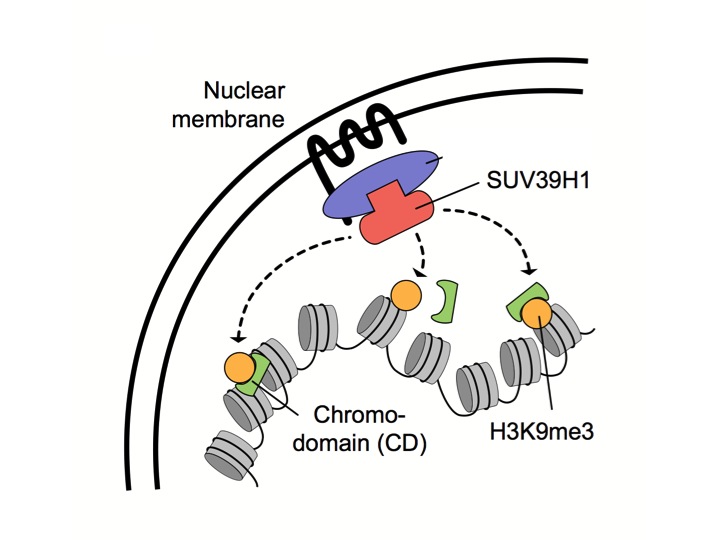While DNA has long been thought of as the molecular sheriff of inheritance, the epigenome continues to unravel it’s mystery in a western film style, with chromatin as the lasso wielding cowboy that never lets past transgressions slide. It seems that the pericentric heterochromatin (PCH) gang has gone and looted chromatin of it’s transcriptional treasures by some organized crime.
A clever team from the German Cancer Research Centre (DFKZ) have set boundaries on the specificity, propagation, and memory of PCH in a quest to understand the heritable patterns of active and silenced chromatin and it’s protein posse. Here’s the loot they recovered from mouse fibroblasts using fluorescence and ChIP-seq:
- A quantitative map of 16 members of the PCH complex with their infamous accomplice histone methyltransferase SUV39H1/2.
- A predictive mathematical model that explains the maintenance and transmission of PCH through the cell cycle.
- And of course, the smoking gun, a mechanism involving “nucleation and looping.”

The histone methyltransferase and complex remains bound to the nucleus waiting to catch randomly forming loops of DNA with primed tags. Adapted from Müller-Ott et al. (CC BY 4.0)
In this model, chromatin bound complexes with a histone methyltransferase form the seed sites that go on to propogate the confined PCH domain across the cell-cycle via some H3K9me3 dynamics. Lead author Katharina Müller-Ott shares that “The silencing mechanism we found works much like throwing a loop with a lasso to catch something. Several factors bind the silencing enzyme stably to certain sites in the genome. Because the DNA randomly moves around and forms transient loops, the enzyme hits other regions in the genome nearby, which then become modified and are switched off.”
Catch the full western at Molecular Systems Biology, September 2014




